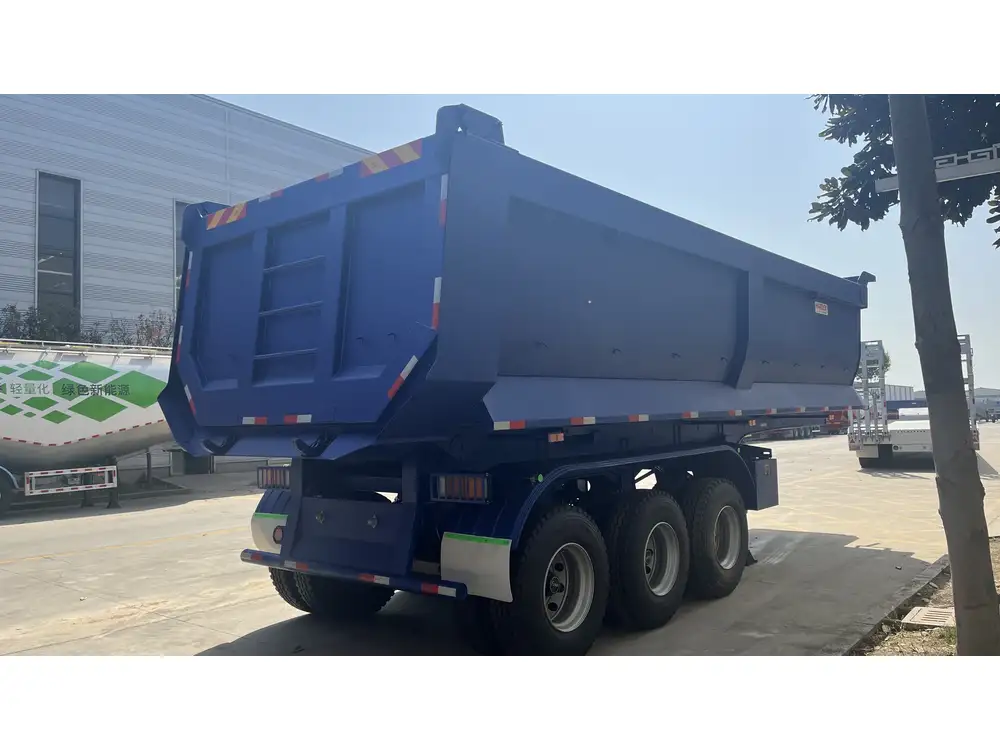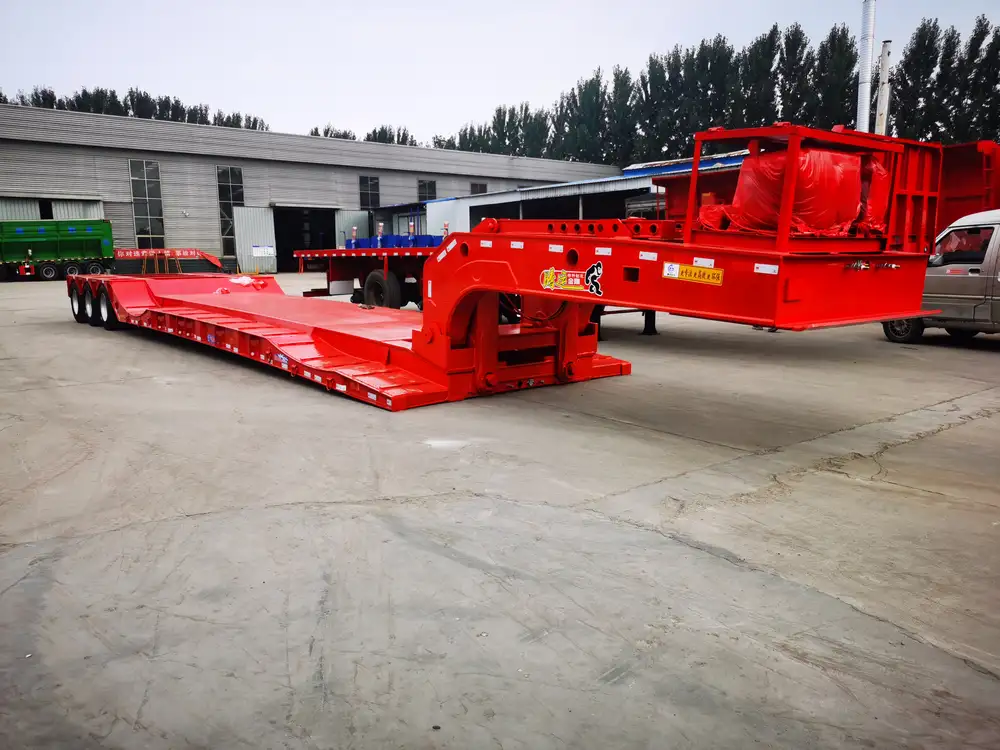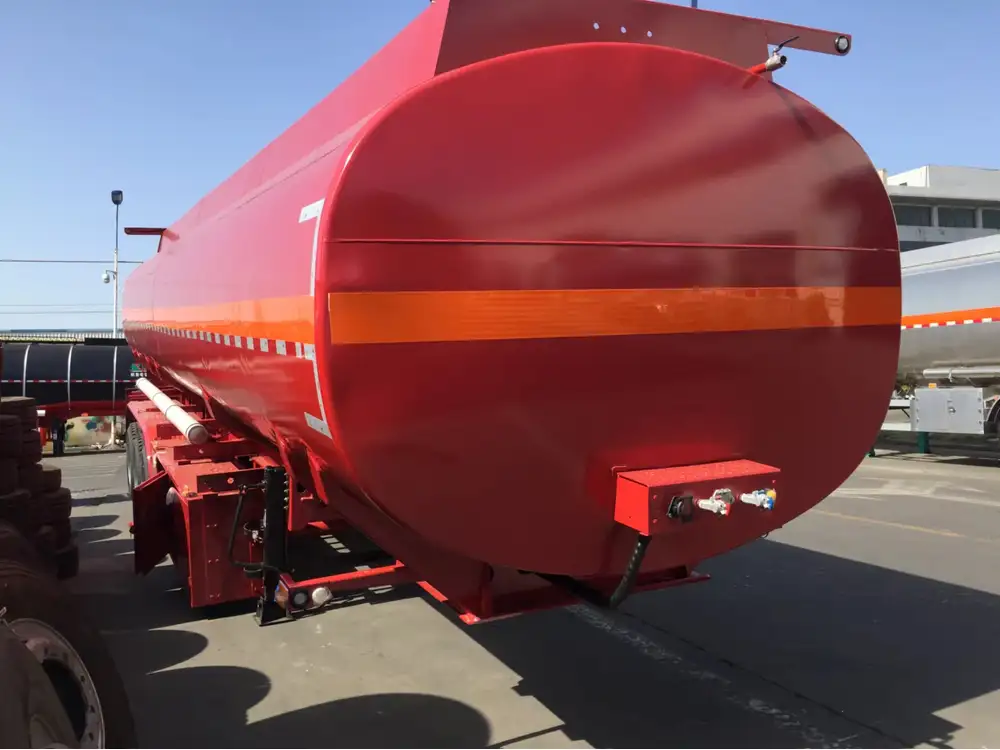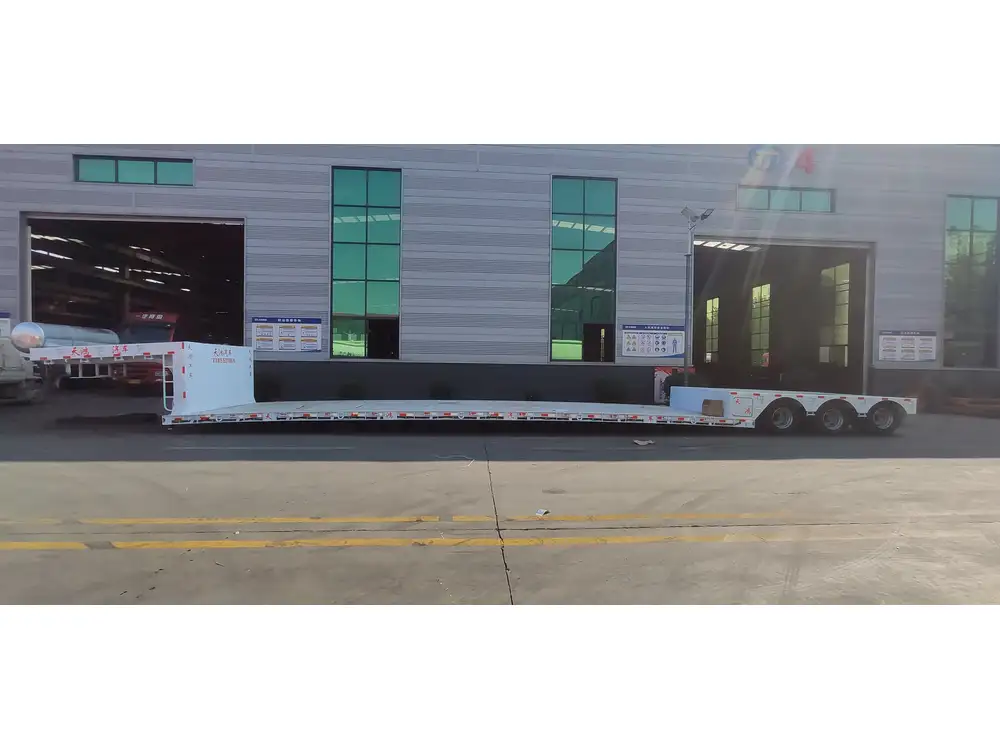Introduction to Semi-Trailer Lengths
When discussing the world of logistics and transportation, one figure stands out prominently: the length of semi-truck trailers. A critical aspect of freight transportation, the dimensions of a semi-trailer significantly influence various operational parameters, such as load capacity, maneuverability, and regulatory compliance. By understanding the standard lengths of semi trailers and the factors that can impact these measurements, we can better comprehend the dynamics of the trucking industry.
Standard Lengths of Semi-Trailers

Overview of Trailer Types and Their Dimensions
The industry recognizes various types of semi-trailers, each serving specific logistical needs. Below is a concise table showcasing the common types of semi-trailers alongside their standard lengths:
| Trailer Type | Standard Length (feet) | Typical Cargo |
|---|---|---|
| Flatbed Trailer | 48 – 53 | Construction materials, machinery |
| Dry Van Trailer | 48 – 53 | General freight, packaged goods |
| Refrigerated Trailer | 48 – 53 | Perishable goods |
| Tanker Trailer | 40 – 60 | Liquids (fuel, chemicals) |
| Lowboy Trailer | 30 – 40 | Heavy equipment |
Impact of Length on Operational Capacity
The length of a trailer directly correlates to the volume of goods it can haul. For instance, a standard 53-foot dry van trailer can typically accommodate up to 26 standard pallets, making it an attractive choice for transporting goods efficiently. On the other hand, a flatbed trailer, being more versatile, also allows for oversized loads, which can be pivotal in construction and heavy machinery transport.
Legal Regulations Governing Trailer Lengths

Federal and State Regulations
In the United States, federal laws regulate the maximum lengths for semi-trailers, generally capping them at 53 feet on interstate highways. However, state laws may vary, and it’s essential to familiarize oneself with local regulations. Below is a summarized breakdown of federally mandated lengths versus state variations:
- Interstate Highways: Up to 53 feet for semi-trailers.
- State Highways: Varies; statutory limits can range from 48 feet to 60 feet, requiring confirmation against local laws.
Oversized Load Permits
For carriers considering transporting loads exceeding conventional dimensions, securing an oversized load permit is crucial. Such permits can simplify the logistics of transporting large items but may involve additional regulations, stipulated routes, and costs.
Factors Influencing Semi-Trailer Length Choices

Load Type and Weight
When selecting a semi-trailer, the type of load being transported significantly affects the choice of trailer length and type. Heavier loads may necessitate different trailer specifications, impacting stability, braking distance, and fuel efficiency.
Route Considerations
The terrain and type of routes traveled can necessitate varying trailer lengths. Urban locales may require shorter trailers to navigate tighter spaces, while highway travel may accommodate longer trailers for efficiency.
Fuel Efficiency and Average Load
Longer trailers have the potential for higher fuel efficiency per load. Nonetheless, operational realities might require balancing trailer length against factors such as road conditions and traffic regulations.

The Importance of Semi-Trailer Design
Aerodynamics and Fuel Efficiency
An often-overlooked aspect of trailer length is its impact on aerodynamics. Longer, well-designed trailers can reduce drag, thereby enhancing fuel efficiency. Innovatively designed trailers may feature aerodynamic retrofits, which can yield significant savings over miles traveled.
Material Composition
The choice of material can also influence the total weight of the trailer. Lighter materials, such as aluminum, can enhance payload capacity while maintaining structural integrity, making them a popular choice for freight companies focused on maximizing efficiency.

A Comparison of Common Semi-Trailer Types Based on Length
Flatbed vs. Dry Van Trailers
| Aspect | Flatbed Trailer | Dry Van Trailer |
|---|---|---|
| Length Options | 48 – 53 feet | 48 – 53 feet |
| Cargo Types | Construction materials, equipment | General cargo, perishables |
| Accessibility | Easily loadable from all sides | Restricted to rear access |
| Protection | Limited cargo protection | Weather-resistant, secure |
Refrigerated Trailers vs. Tanker Trailers
| Aspect | Refrigerated Trailer | Tanker Trailer |
|---|---|---|
| Length Options | 48 – 53 feet | 40 – 60 feet |
| Cargo Types | Perishable goods | Liquid materials |
| Temperature Control | Yes | No |
| Loading Throughput | Standardized pallet optimization | Specialized for liquids |

Cost Considerations in Selecting Semi-Trailer Lengths
Purchase vs. Leasing
One primary decision-point for businesses involves whether to purchase or lease a semi-trailer. Leasing may offer flexibility concerning lengths and types based on shifting operational needs, whereas purchasing can provide long-term savings for predictable routes and cargo.
Maintenance Costs
Longer trailers may incur higher maintenance costs due to increased wear and tear, necessitating regular inspections. Owners must weigh these benefits against the operational capabilities and financial impact of longer-term usage.

Future Trends in Semi-Trailer Lengths
Advancements in Technology
The trucking industry is on the cusp of transformative changes through technology. Innovations such as advanced materials science may future-proof trailer designs, allowing longer and lighter options while still adhering to rigorous safety and compliance standards.
Environmental Considerations
With increasing pressure to reduce carbon footprints, regulatory bodies may explore additional guidelines on trailer lengths to improve fuel efficiency, specifically focusing on reducing emissions per mile traveled.

Conclusion
Understanding the factors that influence the choice of semi-trailer lengths is imperative for manufacturing, logistics, and transportation professionals. The interplay between trailer dimensions, load type, regulatory standards, and technological advancements creates a complex landscape that requires informed decision-making. By grasping these dynamics, manufacturers and operators can not only comply with regulations but also enhance efficiency, reduce costs, and promote sustainability in their transportation logistics.
In conclusion, as we navigate the future of transportation, remaining adept at adapting to these evolving guidelines concerning semi-trailer lengths will be essential for all stakeholders involved in freight logistics. Whether you are a seasoned operator, an aspiring manufacturer, or a logistics provider, we encourage you to delve deeper into the nuances of trailer specifications to align your business strategies accordingly while maximizing operational efficacy.



